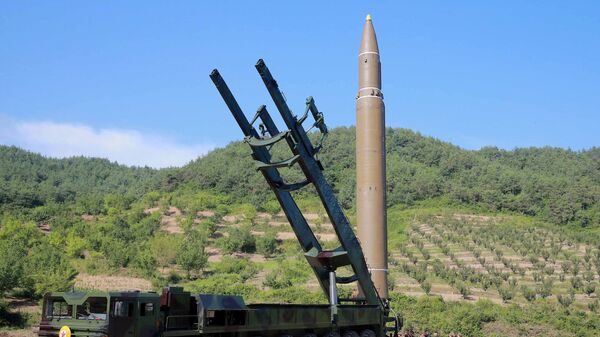Washington called the recent launch to be a new escalation of the threat that North Korea poses to the United States and the world. US Ambassador to the United Nations Nikki Haley warned of military action, threatened of further sanctions on North Korea and urged Russia and China to put pressure on the defiant country to curb its nuclear ambitions. Russia’s representatives in their turn said that warmongering rhetoric cannot solve the situation and dialogue is needed.
Peter Hayes, an honorary professor at the Center for International Security Studies in Sydney University and the director of the Nautilus Institute for Security and Sustainability, said that US policy on North Korea is unpredictable and inconsistent, which undermines efforts to resolve the situation.
"Most [countries] will try to avoid getting too entangled in the US response given the uncertainty and erratic nature of the Trump Administration and its fitful, stop-start engage-confront policies towards North Korea. Until there is a clear strategy and a clear policy, it is hard to follow the US lead," Hayes explained.
TALKS OR THREATS
Since the Trump administration assumed office, it has swayed on what it prefers better with regards to North Korea, deterrence or talks.
In March, during US Secretary of State Rex Tillerson's visit to Japan, the latter stated that "a different approach is required," but did not elaborate on this statement. Shortly after Tillerson said that the "the policy of strategic patience has ended" and that the talks in the current situation seem unlikely.
In April, however, the narrative changed. Tillerson said that negotiations "would be the way we want to solve it."
Experts said that Pyongyang had taken advantage of the United State struggling to decide on its approach to the crisis.
"They’ve been making steady progress on their missile program for the past several years, they’ve stepped on the gas," Research Associate at James Martin Center for Nonproliferation Studies Shea Cotton said.
Despite sanctions in place, North Korea has ramped up its missile program in recent months. Information on the number of launched missiles varies, but it is believed that Pyongyang conducted at least 10 tests since February.
Cotton's colleague from the Martin Center for Nonproliferation Studies, Joshua Pollack, who is a senior research scientist, said he expects the tests to continue.
"The North Koreans are now moving rapidly. They first displayed an earlier version of the Hwasong-14 in a parade in 2015. The first-stage engine appears to be the same as the engine of the Hwasong-12, which was successfully flight-tested only in May 2017. They are testing missiles with great frequency," Pollack explained.
HIGH PRICE
The United States initially said that the missiles launched on Tuesday had intermediate range but then updated the assessment. Late Tuesday the Pentagon confirmed it was an ICBM.
It is widely believed that this rocket as of now cannot reach the continental United States, but Alaska is likely to fall within its range.
Cotton said the recent launch showed that the United States has completely failed on one of its major policy goals.
"I think it’s too little too late, we’ve missed our chance to slow down North Korea’s missile program, we could maybe get them to agree to a freeze on further missile tests … any sort of deal would probably be politically unpalatable because it would come at the significant costs to the US," he concluded.
Pyongyang reiterated on Wednesday that it does not plan to backtrack on its nuclear and missile ambitions as long as the United States continues to conduct its "hostile policy."



